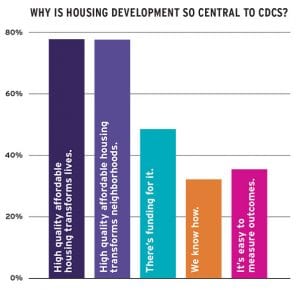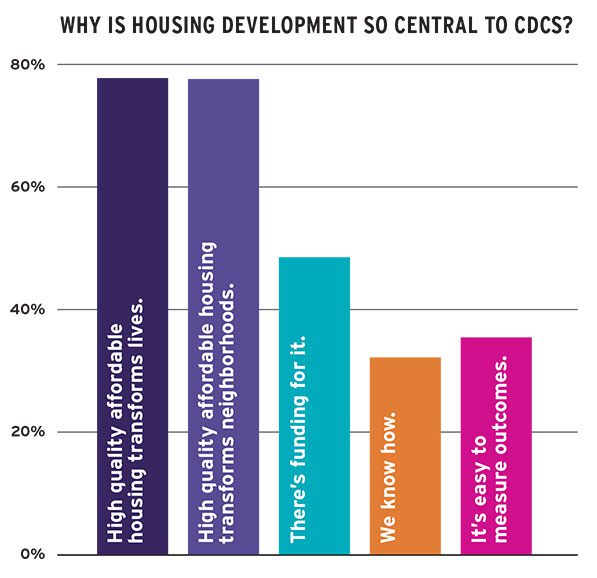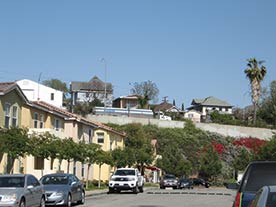
measurement also had something to do with it. Here’s some of what survey respondents said:
“Housing development is an important factor in stabilizing families as well as neighborhoods. The CDC movement was initially, and should continue to be, community driven. This means that through CDCs, communities have a stake in affordable housing development—not just for-profit developers who are primarily in it for the federal subsidies.”
“Quality development transforms neighborhoods. It creatively re-uses existing buildings and designs spaces that lead to friendly interactions.”
“There will always, by definition, be some kind of housing in neighborhoods. The question is, will it allow neighborhoods to preserve diversity and opportunity? Will it be safe and decent? Will the neighborhood feel invested in it? Answering those questions leads to the central role that public investment plays in achieving positive outcomes for neighborhoods.”
“Older leadership and engrained practices ensure housing is still the focus.”
“As we deal with indicators that suggest improved student and school success, the reality of housing blight becomes a problem of safety, support for education, and ease of neighborhood travel.”
—Blandina Rose, Promise Neighborhoods/Black Family Development Inc., Detroit, Michigan
“Truly affordable housing allows many low-income families to get their financial footing, provide a stable environment for their families and pursue other advancement opportunities like furthering their education or starting a small business. Stable and successful families are the foundation of good neighborhoods and communities.”
“Developer fees enable CDCs to fund general operations.”
“My inclination is it started first with the realization that high quality housing transforms lives and neighborhoods, in addition to jobs, coupled with a decrease in administrative funding for CDCs beginning in the 1970s, and a concurrent increase in flexible housing dollars. The ‘know how’ and ‘outcomes’ obviously came after the experience was developed.”
—Corianne P. Scally, Assistant Professor and Co-Director Master’s in Urban and Regional Planning Program, University of Albany, New York
“It is a concrete expression of the community’s efficacy. It shows that community residents have the ability to make things happen in their neighborhood.”
—Bob Van Meter, Executive Director-Greater Boston, Local Initiatives Support Corporation, Boston, Massachusetts
“It helps keep neighborhoods diverse culturally and economically and allows households to have housing choices.”





Comments